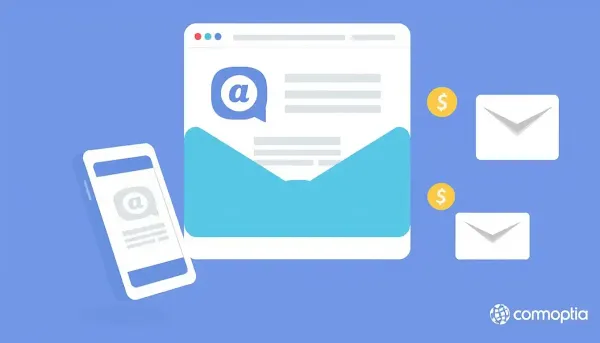Have you ever received an email that felt like it was meant just for you? Maybe it’s a special offer from your favorite store or a reminder about something you recently looked at online. That’s the power of good email segmentation—dividing your email list into smaller groups so your messages hit the right people at the right time. If you’re looking to increase your sales and improve your email marketing game, understanding advanced email segmentation techniques can make a big difference. Let’s explore how you can do that!
What is Email Segmentation and Why Does It Matter?
Imagine you run a clothing store online. Do you think every customer wants to hear about the same sale? Of course not. Some might be interested in summer clothes, while others are looking for winter coats. Sending the same email to everyone isn’t just ineffective—it can even annoy your subscribers. That’s where email segmentation comes in.
In simple terms, email segmentation is the process of splitting your email list into smaller groups based on specific characteristics. When you send targeted messages to these groups, your emails become more relevant and engaging. This often results in higher open rates, more clicks, and ultimately, more sales.
And it’s not just about sales. Good segmentation can build trust and loyalty. When customers feel like you understand their needs, they’re more likely to stick around.
Why Use Advanced Email Segmentation Techniques?
Basic segmentation—like separating new customers from loyal ones—is helpful. But if you want to truly supercharge your email marketing, advanced techniques are the way to go. These strategies help you:
- Deliver personalized content: Tailor your messages so they match each recipient's interests.
- Increase engagement: More relevant emails mean people are more likely to open and interact with them.
- Drive more sales: Well-targeted offers can encourage recipients to complete a purchase.
- Reduce unsubscribe rates: When your emails are useful and personalized, fewer people will opt out.
Think of it like giving a gift. If you choose something the recipient loves, they’re more likely to appreciate it. The same idea applies to emails—personal relevance matters!
Top Advanced Email Segmentation Techniques
1. Behavior-Based Segmentation
This technique groups people based on how they interact with your website or previous emails. For example:
- Browsing behavior: Who visited your product pages but didn’t buy? Send them a reminder or special discount.
- Purchase history: Customers who bought a certain item might be interested in related products. Offer them accessories or upgrades.
- Engagement level: Some people open every email, while others rarely click. Target keen readers with exclusive offers.
It’s like noticing what your friends like and giving them personalized recommendations next time you meet.
2. Demographic Segmentation
Dividing your audience based on age, location, gender, or even income. For instance:
- Location-specific offers: Promote local events or store openings.
- Age-specific products: Share trendy clothing for younger audiences or luxury accessories for older customers.
This way, your messages feel more personal and relevant.
3. Lifecycle Stage Segmentation
Think about where someone is in their customer journey:
- New subscribers: Welcome them with introductory offers.
- Repeat buyers: Reward their loyalty with exclusive deals.
- Inactive customers: Re-engage those who haven’t interacted in a while with special incentives.
Recognizing their stage allows you to craft perfect messages that move them forward.
4. Purchase Frequency and Value
Some customers buy often but in small amounts, while others make fewer but larger purchases. Tailoring your email content to this behavior can boost sales:
- High-value customers: Offer VIP perks or early access to sales.
- Frequent small buyers: Provide bundle discounts or loyalty rewards.
5. Personalized Interests and Preferences
Everyone loves feeling understood. Gathering information about their preferences—like favorite colors, styles, or categories—allows you to send highly tailored recommendations. Use surveys or purchase data to learn more about what each customer values most.
Implementing Advanced Segmentation: Practical Tips
So, how can you put these techniques into action? Here are some simple steps:
1. Collect Quality DataThe foundation of good segmentation is good data. Use sign-up forms, surveys, and website analytics to gather insights about your customers.
2. Use Smart Email Marketing ToolsMost email platforms offer segmentation features. Look for tools that allow you to automatically group contacts based on behavior and demographics.
3. Test and TweakDon’t be afraid to try different strategies. Run A/B tests—send two versions of an email to different segments and see which performs better.
4. Keep Updating Your SegmentsYour customer base changes over time. Regularly review and adjust your segments to stay relevant.
Personal Experience: Why Segmentation Transformed My Business
I remember when I first started email marketing. I sent the same promotional email to everyone, regardless of their interests. The results? Low open rates and few sales. Then I learned about segmentation—specifically behavior-based segmentation. I started sending personalized recommendations based on browsing and purchase history. The difference was night and day! My open rates doubled, and sales increased significantly. It became clear: when you make your emails feel special and relevant, people respond.
Extra Tips for Success
Here are a few quick tricks to help you succeed with advanced email segmentation:
- Be respectful of privacy: Always ask permission before collecting data and offer easy options to unsubscribe.
- Use compelling subject lines: Grab attention with personalized or curiosity-inducing headlines.
- Focus on value: Whether it’s a discount, helpful advice, or exclusive content, make sure your emails deliver something useful.
Wrapping Up
Advanced email segmentation isn’t just a fancy marketing buzzword. It’s a powerful way to connect with your audience more meaningfully. When you understand and use techniques like behavior-based and demographic segmentation, you’ll see your open rates, click-throughs, and sales grow. Take the time to analyze your customer data, experiment, and refine your approach. The effort pays off when you turn your email list into a loyal, engaged community that loves what you offer.
So, are you ready to start segmenting smarter? Your customers— and your bottom line—will thank you!

